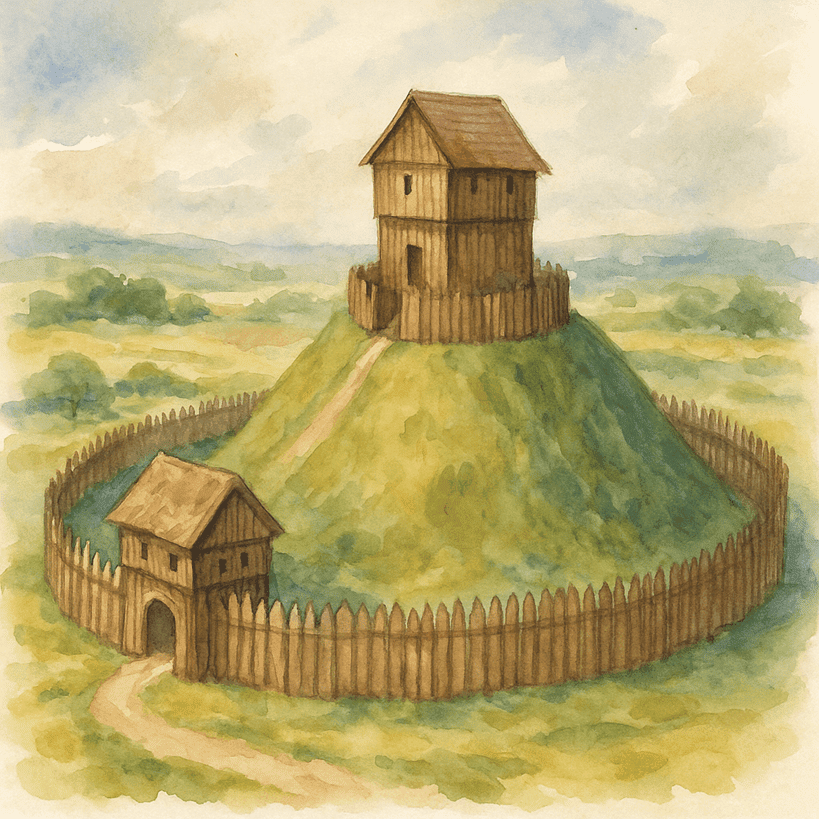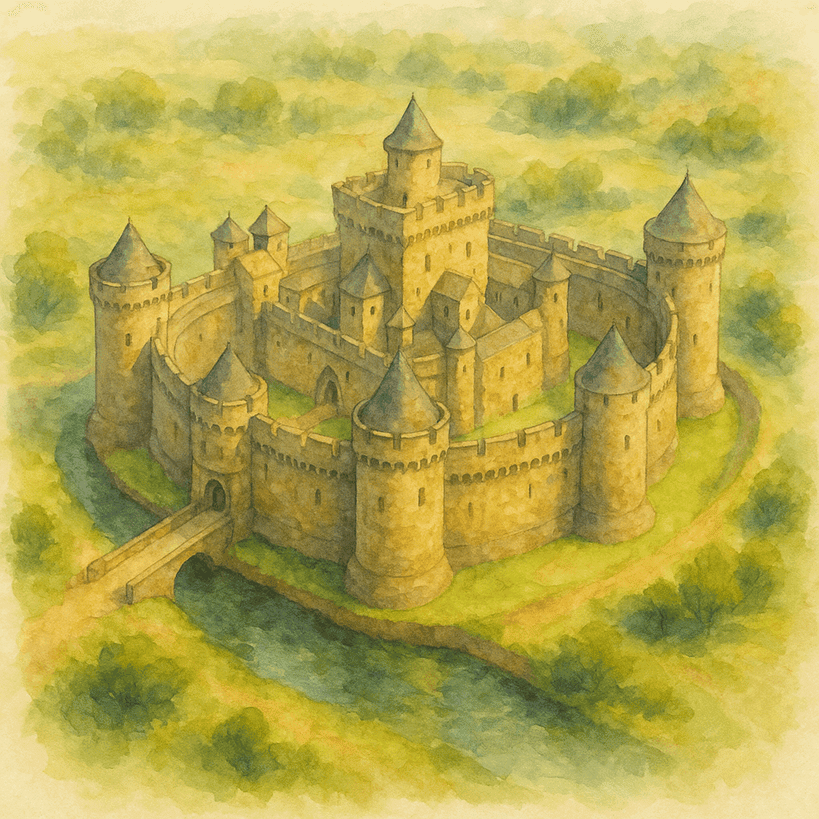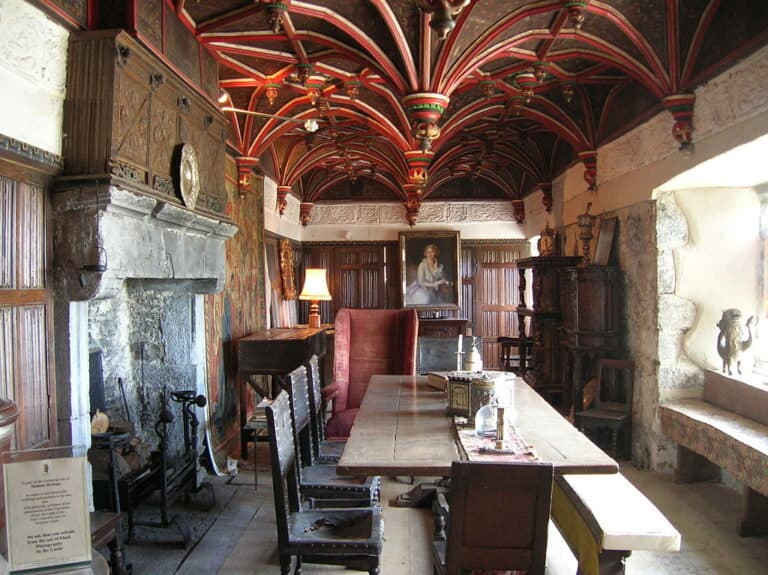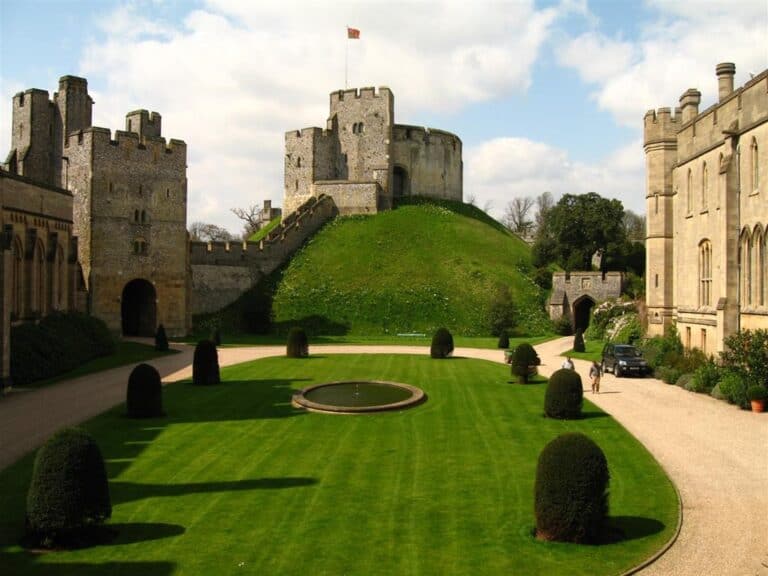The Evolution of Castle Architecture in Europe
Castles are some of the most iconic and enduring symbols of European history. These fortresses weren’t just places of power—they were reflections of the time, adapting over centuries to shifts in warfare, politics, and daily life. Here’s a look at how European castle architecture transformed from humble beginnings to grand palatial residences.
The First Castles: Motte-and-Bailey (9th–11th Century)

In the early medieval period, the need for quick, defensible structures gave rise to motte-and-bailey castles. These were among the first “true” castles in Europe, appearing after the fall of the Carolingian Empire. Lords used them to secure their lands and assert feudal control.
- Design:
- Motte: A (usually man-made) earthen mound with a wooden or stone tower (keep) on top.
- Bailey: A lower courtyard enclosed by a wooden palisade and ditch.
- Materials: Primarily timber—easy to construct but vulnerable to fire and decay.
- Purpose: Simple but effective defense against raiders and rival lords.
Famous example: Château de Gisors in France started as a motte-and-bailey castle before being rebuilt in stone.
Though basic, these castles marked the beginning of a major shift in how land was controlled—through permanent fortifications that served both military and administrative roles.
The Rise of Stone Castles (11th–13th Century)

As kingdoms stabilized and threats grew more sophisticated, wooden fortifications gave way to stone. These new castles were stronger, longer-lasting, and visually impressive—a lasting symbol of a lord’s dominance.
- Why Stone?: Greater durability, resistance to fire, and intimidation factor.
- Key Features:
- Central square or rectangular keeps with thick walls
- High curtain walls and fortified towers
- Arrow slits, battlements, and drawbridges for defense
- Focus on defense: These castles were built to withstand sieges and to project authority.
Example: The White Tower (Tower of London), built by William the Conqueror in 1078, is a prime example of early stone keep architecture.
The stone castles of this era were fortresses first, homes second. Life inside was often cold and cramped, but secure.
The Age of Concentric Castles (13th–14th Century)

With the advancement of siege weapons and the increasing scale of warfare, castle design became more sophisticated. Concentric castles—essentially castles within castles—offered multiple layers of defense.
- Military innovation: Defense in depth became the norm.
- Concentric design:
- Multiple rings of walls (inner and outer baileys)
- Tall towers for flanking fire
- Fortified gatehouses and complex entry systems
- Highly defensible: Attackers had to breach multiple barriers under constant fire.
Example: Beaumaris Castle in Wales, built by Edward I, is often considered the pinnacle of concentric design.
These castles were often royal projects, representing not just military strength but political ambition. Their sheer scale made them both functional and symbolic.
From Fortress to Residence (14th–16th Century)

As warfare slowly declined and stability returned to parts of Europe, castles began to evolve into more comfortable living spaces. Nobility still needed defense—but they also wanted to live in style.
- Purpose shifted: Castles became noble residences and centers of courtly life.
- Architectural features:
- Larger windows and more natural light
- Private quarters, great halls, and chapels
- Early decorative elements like tracery and painted walls
- Blend of styles: Gothic and Renaissance influences began to appear.
Example: Château de Pierrefonds in France shows the romanticized blend of medieval structure and 19th-century restoration flair.
This era represents the transitional phase—when castles started to prioritize aesthetics and comfort without completely abandoning defense.
Palaces Replace Castles (16th Century Onwards)

With the introduction of gunpowder and cannons, medieval castles became increasingly outdated. Thick stone walls were no match for artillery, and rulers began building palaces focused on luxury rather than defense.
- Gunpowder effect: Cannons made castle walls vulnerable, leading to a shift in strategy.
- Palatial architecture:
- Grand facades and symmetrical layouts
- Elaborate interiors for courtly life and display
- Integration into gardens and natural landscapes
- No longer fortresses: These were homes, hunting lodges, and royal seats of power.
Example: Château de Chambord in the Loire Valley blends French medieval and Italian Renaissance styles, showcasing this architectural shift.
While palaces replaced castles militarily, they retained many of the stylistic elements—towers, turrets, and moats—more for charm than protection.
Final Thoughts
European castle architecture is a fascinating window into the continent’s history. From rough wooden forts guarding feudal lands to grand Renaissance châteaux built for royalty, each era left its mark in stone. These structures adapted to war, peace, politics, and fashion—surviving centuries of change.


